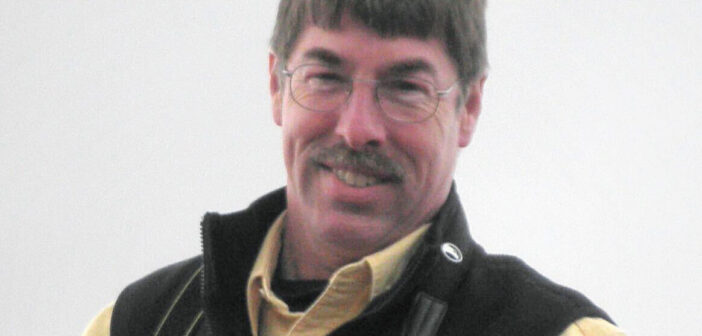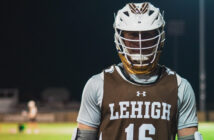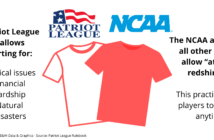Peter Saenger was uncertain of what his future would look like.
Unlike his brother and sister who always knew what they wanted to do as adults, Saenger was a country boy from Henningsville, Pennsylvania who spent most of his time outside looking up at the sky and admiring the birds as they flew by.
“My older brother and sister seemed to know what they wanted to do their entire lives,” Saenger said. “They were focused and I had no clue.”
It wasn’t until one Christmas morning in his late teens that he knew his direction.
“My mother didn’t know what to get me for Christmas, so she got me a new bird book and a bird feeder,” Saenger said. “It was then that I decided that I’m going to make birds my goal.”
Initially taking interest in birds during a second grade field trip to Hawk Mountain and later being formally introduced to ornithology in 1980 at Muhlenberg College, Saenger has since grown his passion for wildlife, becoming a leading member of the Lehigh Valley.
Through conservational research, a 16-year long presidency at the Lehigh Valley Audubon Society where he’s grown budget and conservation efforts and his participation in the Birds of Armenia Project, Saenger not only dedicates his life to birds but to his community, sharing ways to care for the local wildlife just as much as he does.
As an endowed research ornithologist and Muhlenberg College’s collection manager of the Acopian Center for Ornithology, Saenger focuses on the issue of bird-window collisions.
This subject was brought to Saenger’s attention by his first ornithology professor, Daniel Klem Jr. who focused on bird-window collisions in his 1979 doctoral thesis at Southern Illinois University at Carbondale.
“When I went there I was studying other things, but eventually I was introduced to this topic,” Klem said. “I was convinced that this was a serious problem and for 46 years now, I continue to study, write and teach about it.”
Since 2006 Saenger has worked alongside Klem, running field experiments where he observes and documents bird-window strikes.
“It doesn’t matter the window’s size or where they are, they all have a potential to kill,” Saenger said.
To amplify concern, Saenger, along with two colleagues, launched a campaign with the National Audubon Society on bird-window collisions in 2018. Although many people are resistant to solutions like physical barriers, through this collaboration, he’s expanded his audience nation-wide.
Member of the Audubon Society and mentee of Saenger, Brandon Brogle recognizes Saenger’s strong willingness to pursue this issue.
“He’s a great leader,” Brogle said. “He has strong convictions and he acts on those convictions.” Like Brogle, Saenger became involved with the Audubon Society as a college student.
“They contacted Dr. Klem and asked if there was anybody he knew who’d like to go to an ecology workshop in Connecticut,” Saenger said. “He gave them my name and off I went on my first great adventure— I planned on doing a slide presentation for them when I got back, but it never happened… I probably got a job and got busy.”
Although Saenger’s plans with the Audubon Society initially fell through, he decided to give it another shot.
“I figured I’d look for a bird watching girlfriend at the Audubon Society, sort of an ulterior motive,” Saenger said.
Saenger later became president of the organization in 2003. As president, Saenger and the Audubon Society board decided 15 years ago to focus on conservation through education, launching a public outreach program along with habitat improvements to better connect communities with their environment.
Treasurer of the Audubon Society for 25 years, now retired, Frederic Brock met Saenger in 1980 and has seen him grow into his position.
“People like to work with Peter… he’s an easy guy to get along with,” Brock said. “I think he’s done a great job as the organization has grown.”
While programs and field trips spurred membership growth, Saenger, along with two co-authors, raised the organization’s budget by transforming the Audubon Society’s original pamphlet into the book “Birds of the Lehigh Valley and Vicinity.”
“By publishing the book in a larger format with more content, it allowed us to raise a lot more money,” Saenger said. “It’s given us a tremendous boost to allow us to buy laptops, audio visual aids and other educational resources— when I first got involved, there was no money for any of that.”
However, this wasn’t Saenger’s first time working on a book.
In 1992, after Klem was approached by Armenian businessman Sarkis Acopian to write a book on the birds of Armenia, he contacted Saenger to take part.
Working on the Birds of Armenia Project, Saenger searched for illustrators in England and doubled as the international project manager with 56 people in five different countries.
Over a seven year period, the team published a bird book, handbook and a map on the birds of Armenia.
“There wasn’t any part of the books that I didn’t have an influence on,” Saenger said.
Satisfied with Saenger’s work, Acopian fully endowed his position at Muhlenberg College.
Working at Muhlenberg College and the Audubon Society, Saenger’s impacted students and members like Brogle.
Just as Klem gave Saenger his formal introduction to birds, Saenger worked alongside Klem to do the same for Brogle.
“Peter’s been a great mentor out in the field, but also professionally,” Brogle said. “He’s always been there and he’s had great information to share.”
Although Saenger’s taken on many roles, he’s constantly excelled at them— especially when it comes to his work with the Lehigh Valley community.
“I tend to be a workaholic when I like what I’m doing,” Saenger said. “If I do a job, I’m going to do it right or not at all.”






Comment policy
Comments posted to The Brown and White website are reviewed by a moderator before being approved. Incendiary speech or harassing language, including comments targeted at individuals, may be deemed unacceptable and not published. Spam and other soliciting will also be declined.
The Brown and White also reserves the right to not publish entirely anonymous comments.
1 Comment
This reminds me, what happened to the pair of Lehigh Hawks who nested close to campus?